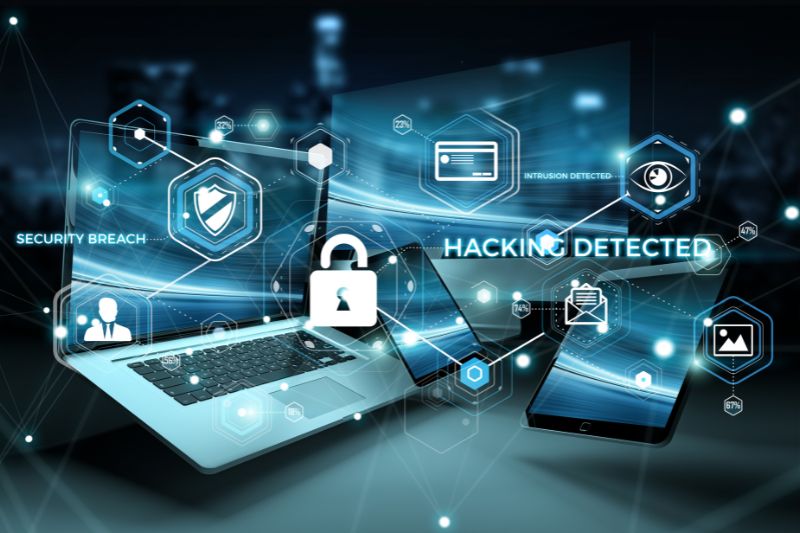Retailers in Beverly Hills Utilizing Modern Security Tech

The rate of property crimes and robberies in Beverly Hills is currently significantly higher than the national average, with retailers being among the primary target of criminals.
Some of the major risks these businesses are exposed to include shoplifting, violence, and employee theft.
Retailers must take proactive actions if they are serious about reducing the physical and financial risks that these crimes pose. This article will illustrate how leveraging modern security tech can help retail businesses provide additional safety to their employees and protect their products and properties more effectively.
Contactless payment methods
These solutions use a technology known as near-field communication (or NFC9), which allows a customer to simply tap a card or a mobile device on a payment terminal to execute a transaction. There are several ways in which contactless payment solutions can boost security in retail businesses.
First, by eliminating physical contact, these solutions can reduce the transmission of pathogens like viruses and bacteria. This may also allow businesses to continue to operate when events like the recent COVID-19 pandemic hit the world or a specific area.
Second, using these systems reduces the need for cash transactions, which criminals may try to conduct by using fake bills.
Third, when customers are not exchanging cash, they are also at lower risk of being the target of a robbery while they are inside the store.
Finally, contactless payment reduces the risk of fraud, as it’s extremely difficult for hackers to reproduce one-time codes that contactless cards generate for each transaction.
AI-Powered video security
Retail store security camera systems are a very important tool in the fight against crime. Cameras should be placed strategically, pointing at entrances, aisles, and checkout areas. Blind spots should be absolutely avoided, as shoplifters tend to operate in an area where they know there is a lower chance of being recorded.
One of the most recent advancements in the field of video security is the use of video analytics software. This solution can collect and analyze large quantities of footage using advanced algorithms to detect suspicious patterns that may indicate a potential risk. For example, video analytics software can tell when somebody is loitering in a certain area without any clear purpose, which may indicate the intention of stealing a product or committing another illicit act. These tools can also recognize individuals that were previously banned from the store and alert security staff.
Video analytics can also monitor employees’ behavior. For example, during an event like the outbreak of the COVID-19 pandemic, it can be used to check whether workers are wearing the right masks and respecting social distancing rules.
Moreover, this technology has numerous beneficial applications outside of the field of security, such as collecting precious insights on customer behavior, which the marketing team can use to improve the store’s offerings and environment.
Access control measures for restricted areas
Thieves and other criminals may also target areas of your store that are not open to the general public, like a warehouse. This is one of the many reasons why retail businesses should implement effective access control measures to prevent unauthorized personnel from accessing these areas.
Traditionally, access control measures have consisted of simple locks, as well as card and fob readers or keypads. However, advancements in technology are increasing the availability of solutions that businesses can adopt. For example, it’s not possible to issue digital credentials on a worker’s smartphone, thus allowing them to use their mobile devices to open and close doors to restricted areas. Not only is issuing digital credentials less expensive than issuing physical ones, but this solution provides a higher level of security in the event the credentials are lost or stolen. That’s because digital credentials are much easier to revoke, and smartphones typically need a passcode to be used (not to mention the fact that many smartphones can be blocked by users remotely).
For areas that contain particularly sensitive data (or valuable assets), retail businesses should also consider using biometric access control solutions and resorting to multi-factor authentication solutions.
Cybersecurity measures
Stats show how the retail industry is the most frequent target of cybercriminals. Moreover, 34% of retailers claimed that cyber threats are their primary concern when considering moving to Ecommerce.
Without adequate protection against cyber crimes, retail businesses risk significant financial losses and reputational damages.
The retailer’s computer systems should always be up-to-date with the latest antivirus and anti-malware software (as well as the latest security patches).
Using strong passwords is also crucial. You should avoid picking passwords that are easy to guess or mention aspects of your personal life, such as your birth year or city of residence.
Retailers should also consider using data encryption. This measure makes it much harder for any hacker to access the store’s confidential information.
Last but not least, employees should be properly educated about the best cybersecurity practices, including recognizing suspicious emails that may represent a phishing attack.











Leave a Reply